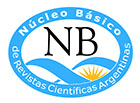Mapping the Traces of Objects. An Affective Cartography
DOI:
https://doi.org/10.59339/ca.v10i19.516Keywords:
clandestinidad, resistencia, afectos, cartografía, niñez, dictaduraAbstract
In the context of the Southern Cone dictatorships, the letter worked as a narrative resource that allowed clandestine militants to communicate with relatives. The letter was thus able to go beyond the framework assigned to it within the social space, because it helped to circulate a narrative that filtered through the repressive policies, also allowing children of dictatorship victims to reconstruct their parents' lives and thus their own identity.
The article examines the possibilities of biographical, political and affective construction from twenty-seven letters written by Fernando Vergara to his daughter Barbara compiled in the book, Letters to Barbara (2019). From these letters the following questions are posed: What role does the location of specific places play in the reconstruction of the father's clandestine life? How does the in-situ performance and the journey through countries and places operate, that the daughter made when constructing her identity? And finally, how can these letters be read in the present?
Downloads
References
Altman, J. (1982). Epistolarity: Approaches to a Form. Ohio: Ohio State Univ Press.
Blejmar, J. (2021). Ficciones del yo y memoria epistolar de los años sesenta en la Argentina. En Reati, F. Y Cannavecciuolo, M. (Comp.) De la cercanía emociona a la distancia histórica (Re) presentaciones del terronismo de estado, 40 años después (pp. 167-190). Buenos Aires, Prometeo.
Castillo, P. & González, A. (2015). Infancia, dictadura y resistencia: hijos e hijas de la izquierda chilena (1973-1989). Revista Latinoamericana de Ciencias Sociales, Niñez y Juventud, 2 (13), 907-921.
Carrillo Padilla, A. L. (2017). Afectividad y espacio biográfico en Centroamérica. Dos cartas de guerra y exilio. Revista de Historia, 76, 85–103.
Crampton (2009) Cartography: performative, participatory, political. Progress in Human Geography 33(6), 840–848.
de Vries, E. (2018). Letter in/on transition: Neo-epistolarity, nostalgia, and new media. En Matthews-Schilinzig, M. & Socha C. (Eds.), What is a letter? Essays on epistolary Theorie and Culture (pp. 159–175). Würzburg ; Köningshausen & Neumann.
Fernández, M. Flores, P., Lastra, T. Uribe, V. (2017). Mujeres en el MIR. Des/armando la memoria. Santiago; Pehuen Editorial.
Hasse, C. (2013). Artifacts that Talk. Mediating Technologies as Multistable Signs and Tools, Subjectivity, 6, pp. 79-100.
Jeftanovic, A. & Vesely, C. (2021). Los reinos de la infancia: imaginarios del poder dictatorial en la poesía chilena para niños durante los años setenta. Literatura: teoría, historia, crítica, 2 (23), 19-46.
Latour, B. (2005). Reensamblar lo social. Una introducción a la teoría de la actor-red. Buenos Aires: Manantial.
Mesquita, A. (2022) Contra cartografía. Longoni A.; Díaz T.; Mesquita, A.; Pongan, G. Y Suárez, S. (Coords.) Como en el muro el muro la hiedra, (pp. 216-239). Centro de Arte Reina Sofía. Madrid.
Morales, L. (2006). Cartas de Petición. Santiago: Editorial Cuarto Propio.
Pacheco V. (2017). Misivas en Resistencia: cartas de mujeres durante la dictadura civil-militar chilena. Facultad de Filosofía y Humanidades. Santiago: Universidad Alberto Hurtado.
Pérez, D., Pérez, A. & Sánchez, R. (2013). El cuento como recurso educativo. 3 Ciencias, 1-29.
Sinding, M. (2018). Letterier: Categories, genres, and epistolary. En Matthews-Schilinzig, M. & Socha C. (Eds.), What is a letter? Essays on epistolary Theorie and Culture (pp. 159-175). Würzburg: Köningshausen & Neumann.
Soto, G. (1996). La creación del contexto: función y estructura en el género epistolar. Onomazein, 1, 162–166.
Vergara, F. (2019). Cartas para Bárbara. Santiago: Gronefot.
Downloads
Published
How to Cite
Issue
Section
License

This work is licensed under a Creative Commons Attribution-NonCommercial-ShareAlike 4.0 International License.
La revista Clepsidra. Revista Interdisciplinaria de Estudios sobre Memoria es una publicación en Acceso Abierto y no cobra dinero a los autores y autoras por publicar (APC) como tampoco a los lectores por acceder al contenido publicado. En este marco, la publicación utiliza las licencias Creative Commons, específicamente Atribución-NoComercial-CompartirIgual 4.0 Internacional (CC BY-NC-SA 4.0). Por esta razón, cuando un manuscrito es aprobado para la publicación, los autores y autoras retienen los derechos de autor sobre su trabajo, pero autorizan a copiar, distribuir, hacer obras derivadas del trabajo original, a condición de atribuir siempre la autoría del trabajo en la forma especificada por el autor o licenciante de la obra. Esta licencia no permite, sin embargo, utilizar la obra ni sus posibles trabajos derivados con fines comerciales.
Por su parte los autores y autoras conservan los derechos sobre el trabajo y garantizan el carácter de inédito y original. También, los autores y autoras ceden a Clepsidra… el derecho, no exclusivo, de publicarlo de manera electrónica. Por lo tanto, los autores y autoras podrán disponer de las versiones finales y difundirlas en repositorios institucionales, temáticos, páginas web personales o cualquier otro uso pertinente, siempre que se mencione la fuente original de publicación.













